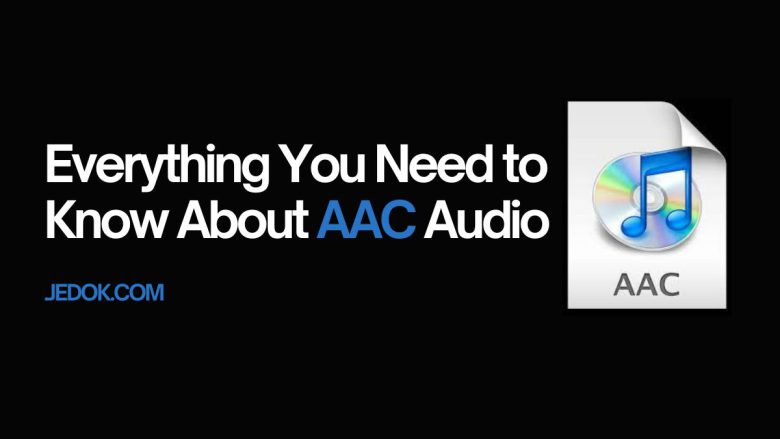
In the vast landscape of digital audio formats, AAC (Advanced Audio Coding) has emerged as a key player. Are you a casual listener, aspiring musician, or audiophile? Understanding AAC audio can help you appreciate its abilities and benefits. This guide is comprehensive. We’ll look at the history, specs, benefits, and uses of the AAC file format.
What is AAC Audio?
AAC, or Advanced Audio Coding, is a digital audio format. It aims to give high-quality sound at lower bitrates than older formats like MP3. AAC is a successor to the MP3 format. It has higher sound quality and more efficient compression. This makes it popular for many uses, like streaming and portable music players.
The History of AAC
Origins and Development
AAC development started in the late 1980s and early 1990s. It was part of the international standards organization MPEG. It was meant to replace the MP3 format. The MP3 format had dominated the digital audio market since it began. The goal was to develop a format. It could deliver better sound at lower bitrates. This would make it suitable for the fast-changing digital music landscape.
Adoption and Standardization
AAC was first introduced in 1997 as part of the MPEG-2 standard, and it was later included in the MPEG-4 standard. It quickly gained traction due to its superior performance over MP3. By the early 2000
Technical Specifications of AAC
Compression and Encoding
AAC produces high-quality sound using advanced compression techniques. Lossless formats keep all the original audio data. AAC is lossy. It discards some audio to reduce file size. However, sophisticated algorithms reduce the impact on sound quality.
Key features of AAC compression include:
- Perceptual Coding: AAC uses psychoacoustic models to identify and eliminate audio data that is less likely to be heard by the human ear.
- Variable Bitrate (VBR) and Constant Bitrate (CBR): AAC supports both VBR, which adjusts the bitrate based on the complexity of the audio, and CBR, which maintains a consistent bitrate throughout the file.
- Spectral Band Replication (SBR): An enhancement technique that improves the quality of high-frequency sounds, especially at lower bitrates.
Bitrates and File Size
AAC files are usually 8 to 320 kbps. Higher bitrates give better sound. AAC can provide equal or better audio quality at lower bitrates than MP3. This makes for smaller files. AAC is efficient. It is ideal for streaming services and portable devices. They have limited storage and bandwidth.
Sample Rates and Channels
AAC can handle up to 48 channels. It supports sample rates from 8 to 96 kHz and stereo and surround sound. This range of uses includes simple voice recordings. It also includes complex audio for films and games.
Advantages of AAC
Superior Sound Quality
AAC has a big advantage. It makes better sound than other lossy formats, like MP3. AAC has better compression. It can deliver clearer, more detailed audio at lower bitrates. Audiophiles and pros seeking top sound quality often choose it.
Efficient Compression
AAC’s compression algorithms are efficient. They produce high-quality audio with small files. This is key for streaming services. Bandwidth and storage are crucial for them. AAC platforms can give users high-quality audio. They do so while using little data or storage space.
Wide Compatibility
AAC is widely supported. It works on many devices and platforms. These include smartphones, tablets, computers, and smart speakers. The major operating systems, like iOS, Android, Windows, and macOS, support AAC. They let you play and share AAC files without extra software or plugins.
Enhanced Features
AAC includes several advanced features that enhance its performance and versatility:
- Error Resilience: AAC incorporates error correction mechanisms to ensure playback remains smooth even in less-than-ideal conditions, such as poor network connections.
- Metadata Support: AAC files can include metadata like artist information, album art, and lyrics, enhancing the listening experience and making it easier to organize and manage your music library.
Practical Applications of AAC
Music Streaming Services
Many music streaming services use AAC as their standard format. This includes Apple Music, Spotify, and YouTube. It has efficient compression and high-quality sound. This makes it ideal for streaming. Users expect instant access to high-fidelity audio with minimal buffering and data use.
Digital Downloads and Online Stores
AAC is also widely used in digital downloads and online music stores. Services like iTunes made AAC the default format. This ensures that bought tracks sound great. They also use little storage on users’ devices.
Broadcasting and Online Media
AAC is commonly used in broadcast and online media, such as internet radio and podcasts. It can deliver clear, high-quality audio at low bitrates. This makes it a good option for streaming audio on the internet. Bandwidth can be a constraint there.
Personal Audio Libraries
Many people prefer AAC for personal audio libraries. It has a good balance of quality and file size. You can rip CDs, buy music online, or convert files from other formats. AAC is a reliable option. It keeps high sound quality while saving storage space.
AAC vs. Other Audio Formats
AAC vs. MP3
MP3 is still one of the most popular audio formats. But, AAC has several advantages over MP3.
- Sound Quality: AAC generally provides better sound quality than MP3 at the same bitrate, thanks to its more advanced compression algorithms.
- Efficiency: AAC achieves higher efficiency, meaning it can deliver comparable or superior audio quality at lower bitrates, resulting in smaller file sizes.
- Features: AAC includes additional features like SBR and error resilience that enhance its performance and versatility.
AAC vs. Lossless Formats
Compared to lossless formats like FLAC or ALAC, AAC has its pros and cons:
- File Size: Lossless formats retain all original audio data, resulting in larger file sizes. AAC, as a lossy format, offers smaller file sizes, making it more suitable for portable devices and streaming.
- Sound Quality: While lossless formats provide the highest possible sound quality, the difference between high-bitrate AAC and lossless audio can be minimal to the average listener. AAC’s efficient compression makes it a practical choice for most users.
AAC vs. Other Lossy Formats
Other lossy formats like OGG Vorbis and WMA also compete with AAC:
- OGG Vorbis: OGG Vorbis is an open-source alternative to AAC, offering similar sound quality and compression efficiency. However, AAC has broader compatibility and industry support.
- WMA: Windows Media Audio (WMA) is another lossy format with comparable performance to AAC. While WMA was popular in the early 2000s, AAC’s adoption by major companies like Apple has given it a wider user base.
Conclusion
AAC has emerged as a top audio format in the digital age. It has a great balance of high-quality sound, efficient compression, and broad compatibility. AAC has advantages over older formats like MP3. Major streaming services and devices widely use it. So, AAC is essential in modern audio.
Understanding the benefits of AAC can help you optimize your listening experience. This applies whether you’re streaming music, downloading tracks, or managing your audio library. Accept the power of AAC audio and enjoy the best that digital sound has to offer.


